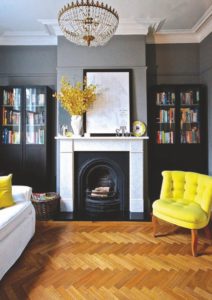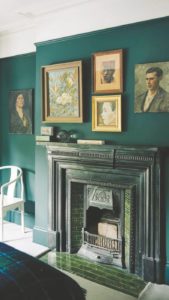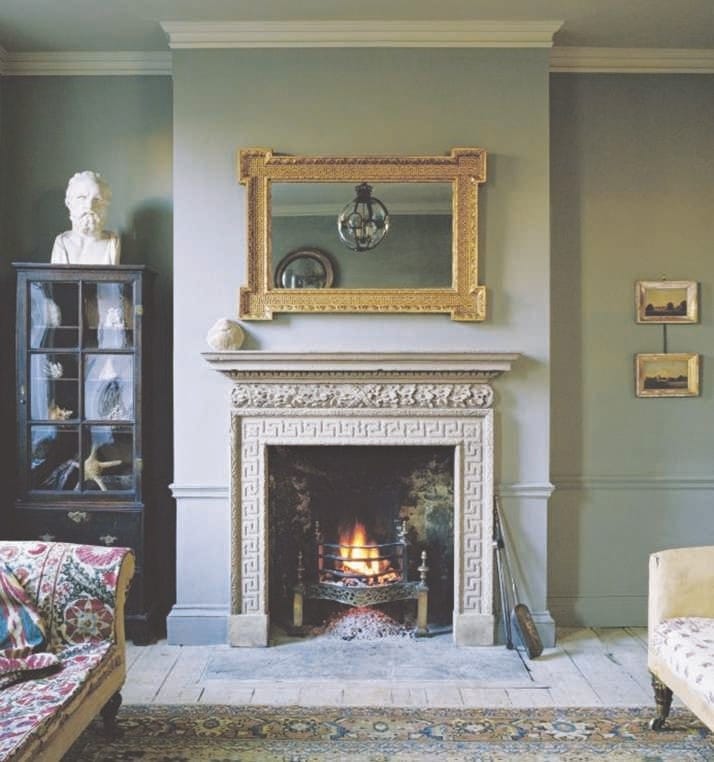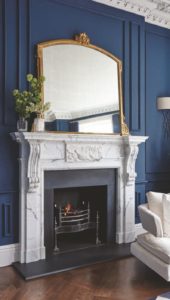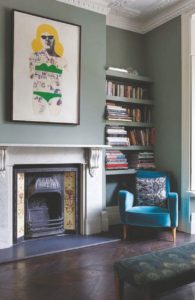Antique Fireplaces
A fireplace gives a room an attractive focal point, and if you live in an older home you may be lucky enough to have an original.
Words: www.fireplaceantiques.co.uk
Victorian
The Victorian Era was the period of Queen Victoria’s reign from 1837 – 1901. Fireplaces from this period can be categorised into two main sub-styles, the early and mid-Victorian fireplaces and the late Victorian fireplaces.
Early and mid-Victorian fireplaces are typically very ornate, with intricate designs focusing somewhat on a floral pattern to the casting. This design has become very popular in modern-day reproduction fireplaces as they take their inspiration from these original antique fireplace designs.
During the mid to late Victorian period in the fireplace industry, the styles became a little more geometric than floral, offering a much cleaner and simpler look, but all the same, these antique fireplaces still look excellent in their fully restored state. Additionally, antique marble fireplaces and antique wood fireplaces with their floral and geometric designs are exhibitions of the standard these craftsmen worked to at the time.
Georgian & Regency
The Georgian Era is normally defined as including the reigns of King Georges I, II, III and IV covering 1714 to 1837 (with the sub era of The Regency 1811 – 1820). Fireplaces from this period were of grand proportions and typically designed a complete focal point of the room. This look was achieved by using cast iron register grates and grand fire baskets in large fireplace openings; these were accompanied by intricately designed solid wood surrounds and marble fireplaces. A typical antique Georgian fire surround or antique cast iron register grate from this period would include designs such as hand carving; or, in the case of cast iron ‘cast’ medallions, urn or swag features. All these types of design come from this era and our range of fully restored antique fireplaces complement this stunning period of British History.
Art Nouveau
Art Nouveau is a particular period in time in which an international design movement swept the world covering the years of the early 1880s to 1914 (although most popular in the 1890s to 1905). For the fireplace industry, this was an exciting time, never-before-seen designs were created, new styles were manufactured, and previously outrageous ideas were now the fashion. A typical antique fireplace of this period is easily sorted from the preceding Victorian and Georgian period fireplaces, these designs were very organic incorporating more floral and plant-inspired motifs, as well as highly stylised flowing curvilinear forms. This era in design history is an important step and is classed by many as the ‘bridge’ between the historicism of Neo-classicalism and Modernism.
Edwardian
The Edwardian Era covers the period between 1900 and 1920. At the beginning of the Edwardian period most fireplaces, particularly the cast iron insert fireplace designs, were focused on having tiles as a feature.
Fireplaces in this era were typically made from cast iron, and as the period progressed fireplaces became taller and slimmer, the decoration becoming simpler and less complex than designs seen in the late Victorian period. Cast iron inserts with tiles became less popular, being replaced more often by canopies on legs with large angled panels either side covering the space between the canopy and the fireplace surround. Instead of traditionally having a space to slot the tiles in the cast, canopies on legs used tiled panels which were then placed at angles to the canopy.
In the mid-Edwardian period, cast iron combination fireplaces with tiles became popular, similar to tiled cast iron inserts seen in the Victorian period but with simpler designs and a surround included in the cast.
During the Edwardian era another style became popular known as the arts and crafts style, which was mainly focused on using local materials for the fireplace and bringing them into the home. The theme for the arts and crafts style was always natural and materials were sourced locally where possible. A range of materials were used during this period including mainly cast iron, brick and tiles and, in some of the more upmarket houses made-to-measure beaten copper fireplaces were a popular design.
Large surrounds also became a popular fashion during the Edwardian era, particularly wooden surrounds that incorporated large mirrors. During the late Edwardian period cast iron started to decrease in popularity for fireplaces as other demands for cast iron materials increased significantly at the start of World War 1.
Cleaning marble hearths and surrounds
Marble is porous so you need to be careful what you use to clean it as it will soak up liquids. Avoid liquids that could stain, such as coloured household cleaners. Wipe over regularly with a damp cloth and use a specialist cleaning solution for getting rid of stubborn marks without damaging the stone.
Removing paint from cast iron
If you have an old fireplace that needs some attention you can strip it back and protect the iron or repaint it. The main thing to remember is not to use a hot air paint stripper as it could cause the metal to crack. Put plenty of protection on the surrounding areas, make sure the room is well ventilated and wear gloves and protective eyewear, then apply a chemical paint stripper to the surface. Leave it to work for the recommended time until you see the layers of paint start to bubble, then remove the softened paint with a plastic or wooden spatula. Use an old toothbrush to get into any detailing or intricate areas.
If you really can’t face the thought of all that work, have the whole piece taken and dipped.
Protecting cast iron
Once the paint has been removed it’s important to protect the bare metal in order to stop rust forming. You’ll need to use an iron paste, which protects and gives a beautiful black sheen at the same time.
Cover the surrounding areas with dust sheets, wear gloves and apply the paste sparingly using a soft cloth. Leave it to dry for at least four hours and then buff.
Make sure that the fireplace is free of any old, flaking paint by using a wire brush, then rub over with an abrasive paper and wipe clean. A matt spray paint will give a good finish; just remember to cover all surrounding areas and use a sweeping action, applying several thin coats to avoid drips.
Safety first
If you have a wood-burning fireplace and use it regularly, always use a screen for safety purposes. It will stop sparks and embers from falling on the floor and keep children safe. A free-standing screen can add a decorative touch, but make sure it meets your safety requirements and is an adequate size.
If you’re restoring an old fireplace, don’t just light it, as there are checks which need to be carried out first. Make sure that the hearth and chimney are in good condition and comply with current regulations. If you are in any doubt, check with your local authority’s Building Control Office.
Posted in: Interiors
